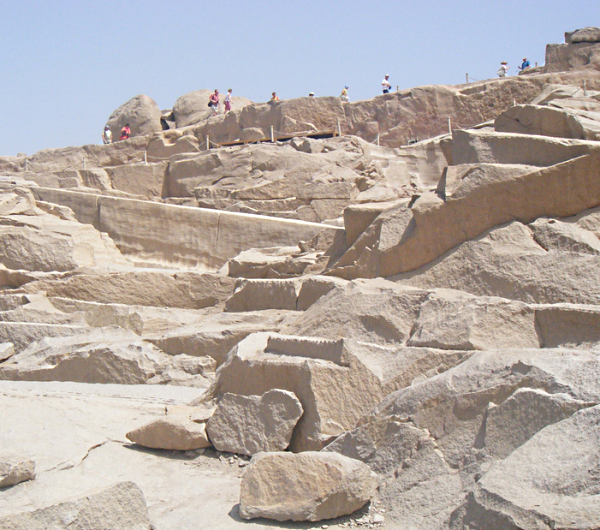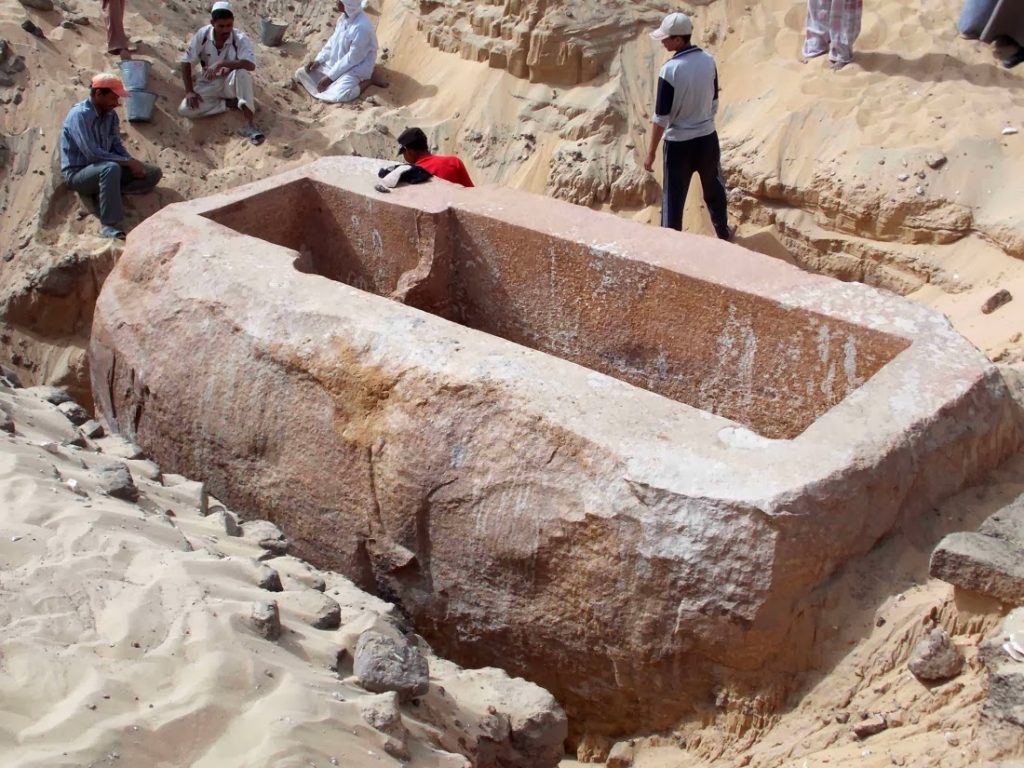Granite Quarries
The famous granite quarries lie in the hills to the south of Aswan, just off the main road. They were the main source of granite in Egypt, exploited from earliest times right through to the Greco-Roman Period.
The Fourth Dynasty pharaohs who built the pyramids at Giza (2613-2494 B.C.) were among those
who exploited the quarry.
N ine great slabs of granite, weighing fifty-four tons each, were extracted to support the ceiling of the so-sailed E~§ing’s Chamber of the &framid of Khufu~(Cheops).
Red granite was chosen for the Valley (or Granite) Temple of Khafre (Chephren).
Black granite was quarried for the lower levels of the outer casing of the Pyramid of Menkaure (Mycerinus).
The ‘unfinished obelisk’ still lies in the northern quarry.

It represents an ancient project that failed.
An unanticipated fissure was found in the stone and the obelisk was abandoned with its underside still attached to the bedrock.
There is no indication ofwho it intended for.
Had it been completed as originally planned, however, it would have weighed some 1, 168 tons and soared to a height offortv,-two meters.
Its importance lies in the fact that it has enabled scholars to study, and consequently understand, the various stages of quarrying that
went into the production of granite obelisks and other large monuments in ancient times. i Evidence shows that workers first sank shafts to determine the nature of the rock.
Vhen a suitable expanse of stone was found, the uneven surface was removed.
The next stage, the most delicate, was to free the two sides of the obelisk from the stone.
Early this century it was thought that this was done by forming holes along the proposed line of separation, inserting wedges of wood into them, and then simultaneously wetting all the wedges along the line; with the expansion of the wood the block, it was thought, would detach at the line indicated.
Later, the idea of wooden wedges was given up in favor of copper wedges, which it was believed were driven in by hammers.
Evidence of such slots still remains in some ofthe surrounding rocks. Indeed, it is the method still used today in the quarries in central Sinai.
More recent evidence suggests that obelisks were literally bashed out with large balls of dolerite attached to wooden
rammers.
Hundreds of these, each weighing up to five a half kilograms and measuring fifteen to thirty centimeters in diameter, were found near the unfinished obelisk, and a series of parallel, vertical, concave grooves along its sides indicate that they might have been struck vertically downward with great force.
Two wide embankments which led from the quarry to the river, recorded by early scholars as indicating the route by which the monuments were transported, are no longer visible t0day We are left with an incomplete picture, and it needs a stretch of the imagination to visualize the method by which
such mcnoliths were lifted, moved to the embankment, and placed on river barges to be transported downstream.
All we have as evidence is the unhnished obelisk atAswan and a relief in the temple of Deir al-Bahari at Thebes of two obelisks shown end~to-end on a barge some seventy-eight meters in length,
being towed by three rows of boats, nine to each row, with a tenth in the lead.


